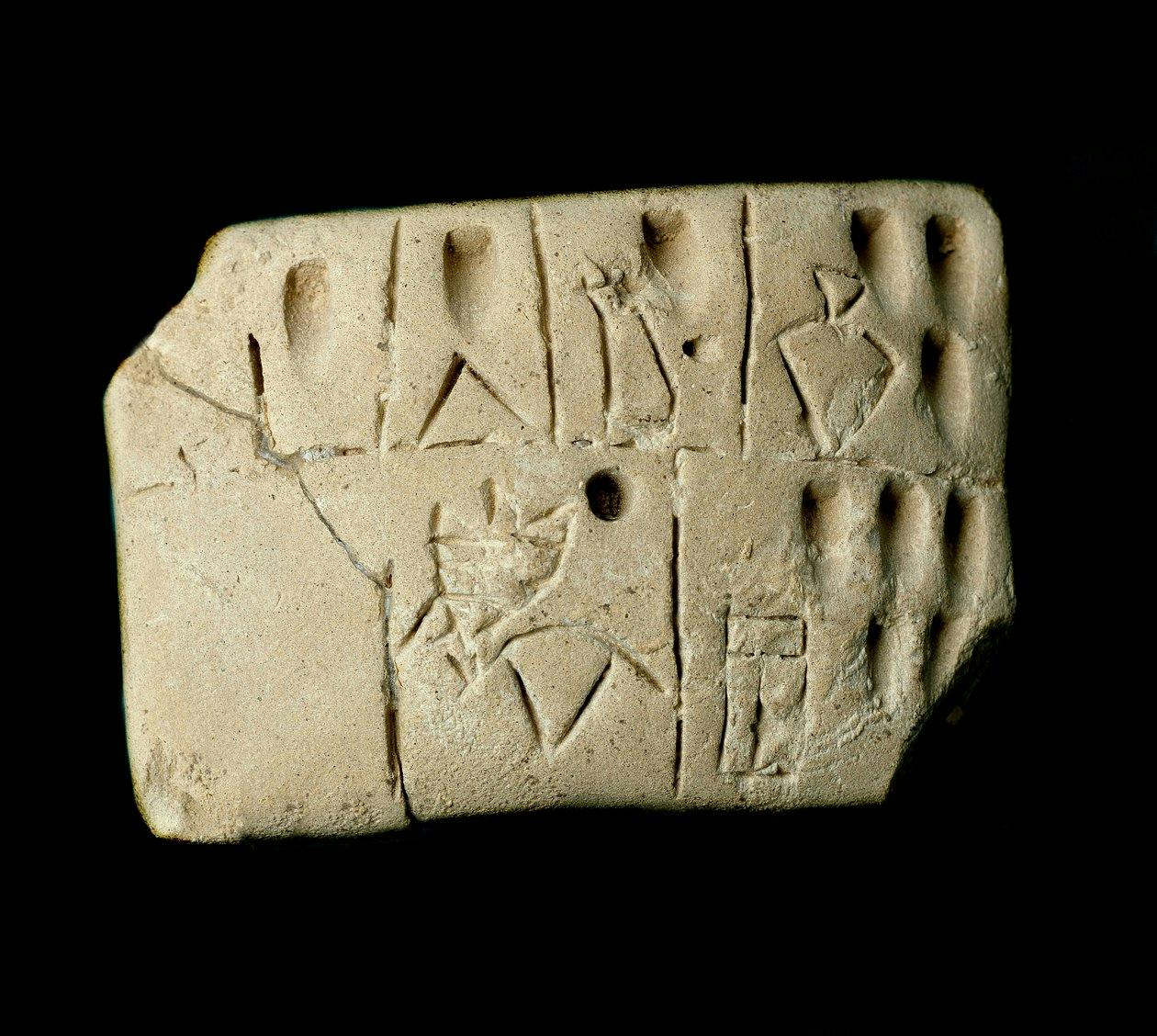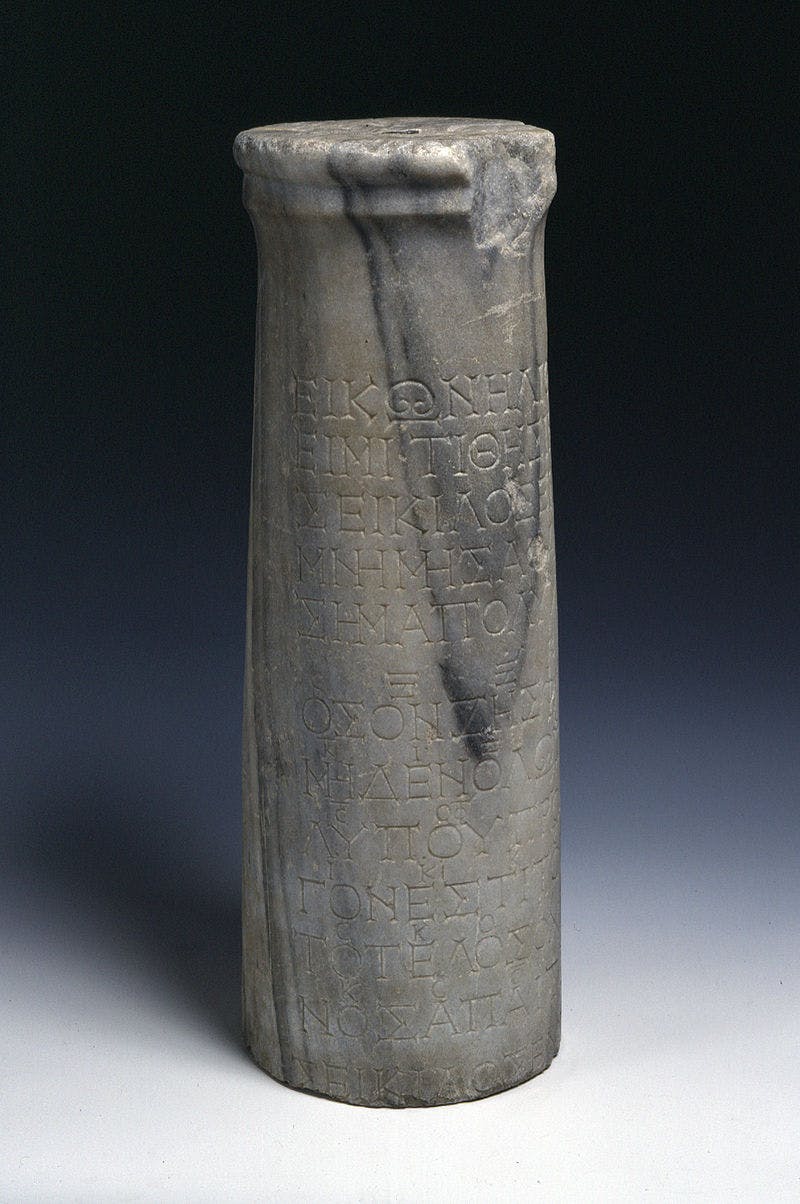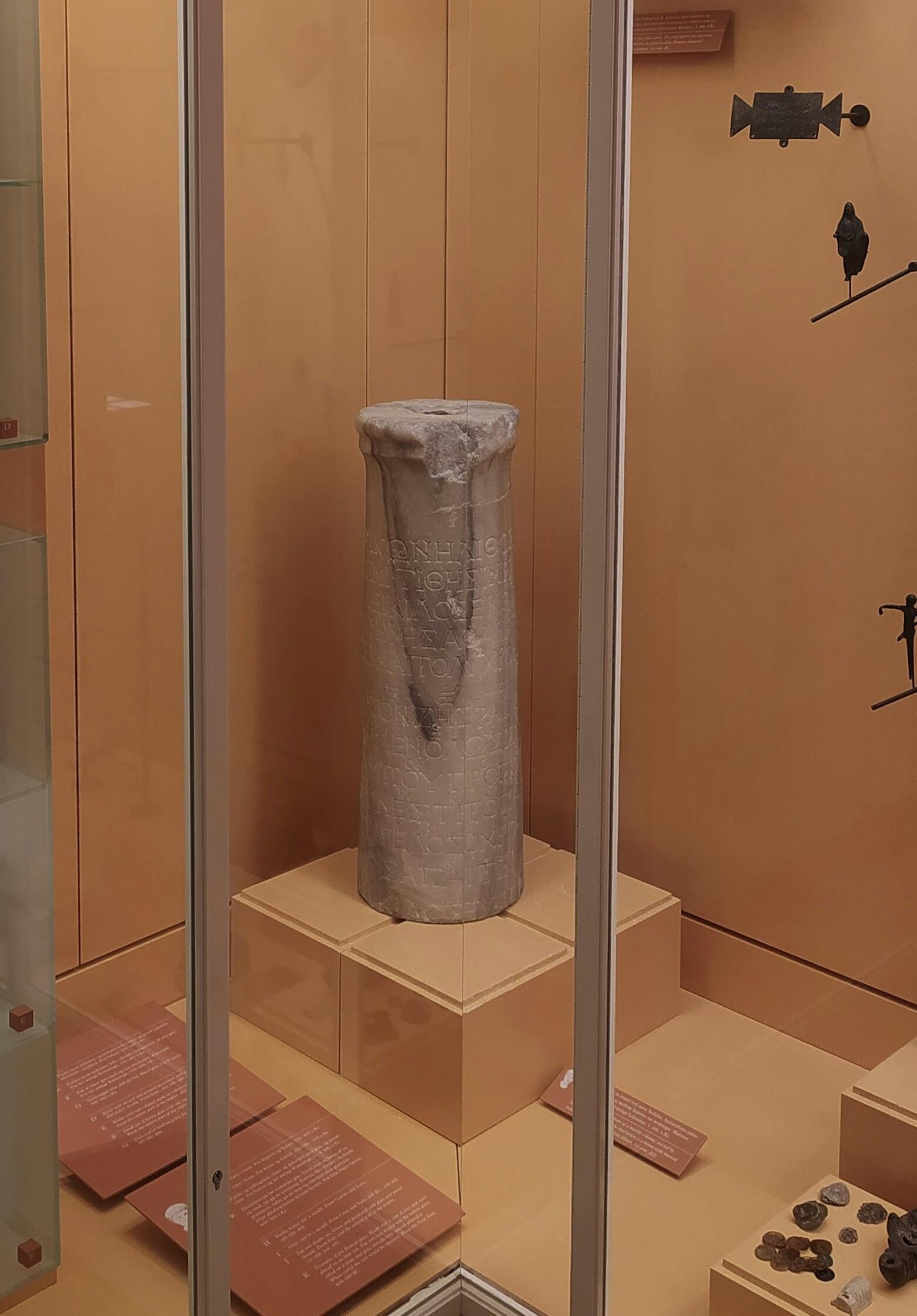 Clay tablet engraved in cuneiform writing
Clay tablet engraved in cuneiform writingNewsMusic
The world's oldest song: the Epitaph of Seikilos
Written by SvenMar. 20, 202410
 Seikilos Epitaph
Seikilos EpitaphI sometimes ask people what do they listen to
“I listen to everything, even old-fashioned stuff…”
"Like what ?
"Like Lunatic"
And there I am in pain. I’m in pain for a simple reason: the older stuff they listen to is often more recent than the newer stuff I listen to (get it ?). For me the 2000’s were yesterday, and the 90’s aren't "old fashioned" either, since I spend my time listening to artists from the 60's and 70's. From my point of view, music starts to be really old-fashioned before rock, from the 50’s onwards.
When I was studying musicology, a music history teacher told us during a lesson “in the 70’s music writing was freer. I mean, the 1370’s. » Oh right! To him, the 70’s could actually be in the 14th century.
So if I ask him what does he listen to, he is able to tell me:
"I listen to everything, even old-fashioned stuff…"
"Like what ?"
"Like the Seikilos epitaph"
Yes, we're going to talk about the most "old-fashioned" stuff you can imagine: the oldest song in the world.
 Clay tablet engraved in cuneiform writing
Clay tablet engraved in cuneiform writingWe have very few traces of antiquity’s music. In total, barely sixty ancient scores have reached us, often in very fragmentary states (small pieces, not necessarily readable). The score of “Song of the Goddess Inanna” (≈ 1,400 BC) engraved on a clay tablet in cuneiform writing is the oldest known record of music to date, but is too incomplete to make it an interpretation. Oddly there are no photos of this tablet, but the illustration above gives you an idea of what it might look like.
One fine day in 1883 in Tralles in Turkey, during the construction of a railway line, workers came across a stele bearing mysterious inscriptions. By extracting the column, the guys (a bit of a nag) break the base and damage the last line of text, the meaning of which remains uncertain today (We'll come back to this last line).
Finding the object charming, the director of the railway company offers it to his wife, who will use it as a pedestal to place a flower pot. Until one day, archaeologist William Ramsay told him that his flower pot was literally on the oldest complete and interpretable song in the world.
The column then passed through many hands: from Istanbul to Stockholm via The Hague, before landing at the National Museum of Denmark in Copenhagen where it is still on display today.
 The column on display in Copenhagen
The column on display in CopenhagenBut then what is this column? What is this song?
An epitaph. A funerary work that Seikilos the Sicilian (the songwriter) dedicated to his wife, to his father, or to decorate his own tomb (we're not sure, precisely because of the last line). It dates from the 2nd century AD.
Here it is ! Performed as faithfully as possible, with lyre and antique percussions.
The column first displays a short poem, without music:
“ΕΙΚΩΝ Η ΛΙΘΟΣ
ΕΙΜΙ· ΤΙΘΗΣΙ ΜΕ
ΣΕΙΚΙΛΟΣ ΕΝΘΑ
ΜΝΗΜΗΣ ΑΘΑΝΑΤΟΥ
ΣΗΜΑ ΠΟΛΥ ΧΡΟΝΙΟΝ"
Translation:
"The stone that I am is an image.
Seikilos places me here, an immortal sign of eternal memory."
Then, the following words to which the melody is sung:
Ὅσον ζῇς φαίνου
μηδὲν ὅλως σὺ λυποῦ
πρὸς ὀλίγον ἐστὶ τὸ ζῆν
τὸ τ έλος ὁ χρόνος ἀπαιτεῖ"
"As long as you live, shine! Don’t worry about anything! Life hardly lasts. Time takes its toll."
After this text there is a dedication, the famous damaged last line:
"Σείκιλος Εὐτέρ"
Today there are three hypotheses concerning translation:
1. “From Seikilos to Euterpe.” Dedication to a woman named Euterpe, probably his wife.
2. “Seikilos son of Terpos.” A tribute to his father.
3. “Seikilos son of Euterpe.” As Euterpe was the presiding muse of music in ancient Greece, Seikilos (as a musician) would symbolically consider himself his son. Which means that he himself would have chosen the music to inscribe on his own funerary monument. Like we choose music for our funeral these days, except that Seikilos composed it himself like a champ.
This third possibility is the most commonly accepted today.
 The scriptures more detailed
The scriptures more detailedThe fact that we can listen to this music today on Spotify and Youtube 2000 years later is a miracle. It is thanks to the tables of Alypius (a treatise on music written by a Greek writer around 360 AD) that we were able to convert ancient music theory into our own. The copyist monks of the Middle Ages translated the tables on which each sign of so is inscribed with its meaning. Sometimes humanity is beautiful! Sometimes a little less, but this is beautiful.
That said, even with the meaning in front of you, it remains a hassle to translate an ancient score. Greek music theory had 1687 different signs, and those used for singing were not the same as those used for instruments. Basically if you wanted to learn music theory at the time, it was hell. Much more than today... when it's still hell.
Here is the user manual for the Seikilos epitaph: above each syllable of the text, there is a symbol which indicates how to sing the syllable in question. On the score you have all the necessary indications apart from the tempo, at the time always left to the free interpretation of the musician. It is likely that the melody was sung accompanied by a lyre, the most popular instrument in antiquity. In general it worked like a dialogue: the lyre plays the melody, then the voice responds with the text on the same melody, and sometimes the two come together to play.
Let's talk about the text
"As long as you live, shine!
Don’t worry about anything!
Life hardly lasts.
Time takes its toll."
The context infuses these four lines with very powerful meaning.
Music from 2000 years ago, composed in a world very (very) different from ours, encourages us to enjoy life now, before it is too late. “Don’t worry about anything! ", as long as you live you must enjoy every moment. Life is short, carpe diem, YOLO…
It is epicurean music on a funerary stele, which uses death as a pretext to invite us to celebrate life. Philosophy, time, transmission, art, happiness, life, death... Everything is there, carried by an age-old melody.
Current musicians continue to record the Seikilos song with many different interpretations and arrangements. That’s also the beauty of it: you can imagine everything about this melody.
If you are gamers, you may have heard it in Civilization V and VI, or in Assassin’s Creed Odyssey.
It seems that the past opens the doors to the future. You’ve heard it all before : as long as you live, don't worry about anything. Shine, poor fools!